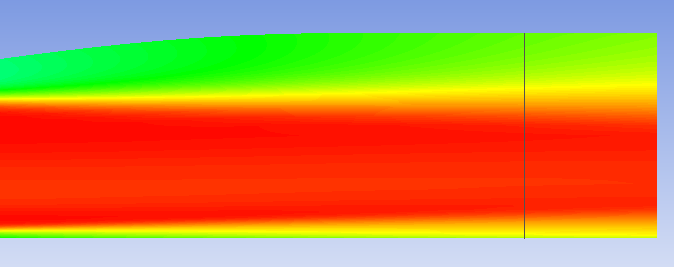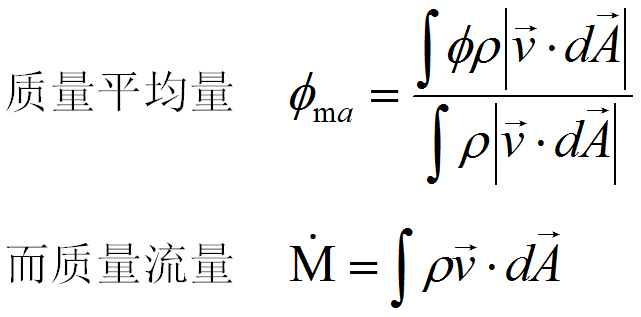博文
[转载]出口的总压如何平均
||
投了个文章,讨论了一下沿程的总压分布。
审稿人说,
“下游的总压怎么比上游还高呢?”
诧异.....
之前确实没发现这个问题,
本来想通过总压分布来
对比数值仿真与实验数据。
在2019冲压发动机会议上
跟张堃元老师讨论了,
张老师的建议是:截面平均方法可能错了。
重新查了一下fluent计算结果,
我用的是area-weighted average方法。
之前认为这个比facet-average方法好多了。
没想到还是有问题。
不管是area-weighted average方法还是facet-average方法
都存在平均总压升高的情况。
但实际的总压云图是这个样子的

在fluent里面,还有一个
mass-weighted average
试了试这个,沿程总压是下降的。
但为什么area-weighted average方法和facet-average
导致总压反而升高呢?
详细请参考:CFD-online讨论
看jola的回复
Area-averaging and mass-averaging will give different results and what you should use depends on what variable you are interested in. For conserved variables like total-pressure you should use mass-averaging, whereas for other variables, like static-pressure, you should use area-averaging. Check out some of the refences mentioned.
他提到了保守量。我没明白啥意思。
我觉得可能跟密度的变化有关。
因为mass-weighted其实在积分号内考虑了密度。

如果截面的密度有变化,
那么需要用mass-weighted average
下图是算例中的密度分布。

https://blog.sciencenet.cn/blog-531760-1202841.html
上一篇:[转载]Linux 系统下CFD/CAE
下一篇:[转载]远程桌面启动 matlab 和 ansys 出现 license 错误
全部作者的其他最新博文
全部精选博文导读
相关博文
- • MDPI携手中国农业大学三亚研究院共同举办作者培训会——提升青年学者科研写作能力
- • 诚邀国内外青年学者参加Bio-X国际青年科学家论坛
- • Analysis of Schizophrenia through the Networked DIKWP(初学者版)
- • Chinese Calligraphy through the Networked DIKWP(初学者版)
- • Mental Disorders through the Networked DIKWP(初学者版)
- • Evolution of Cosmology through the Networked DIKWP(初学者版)